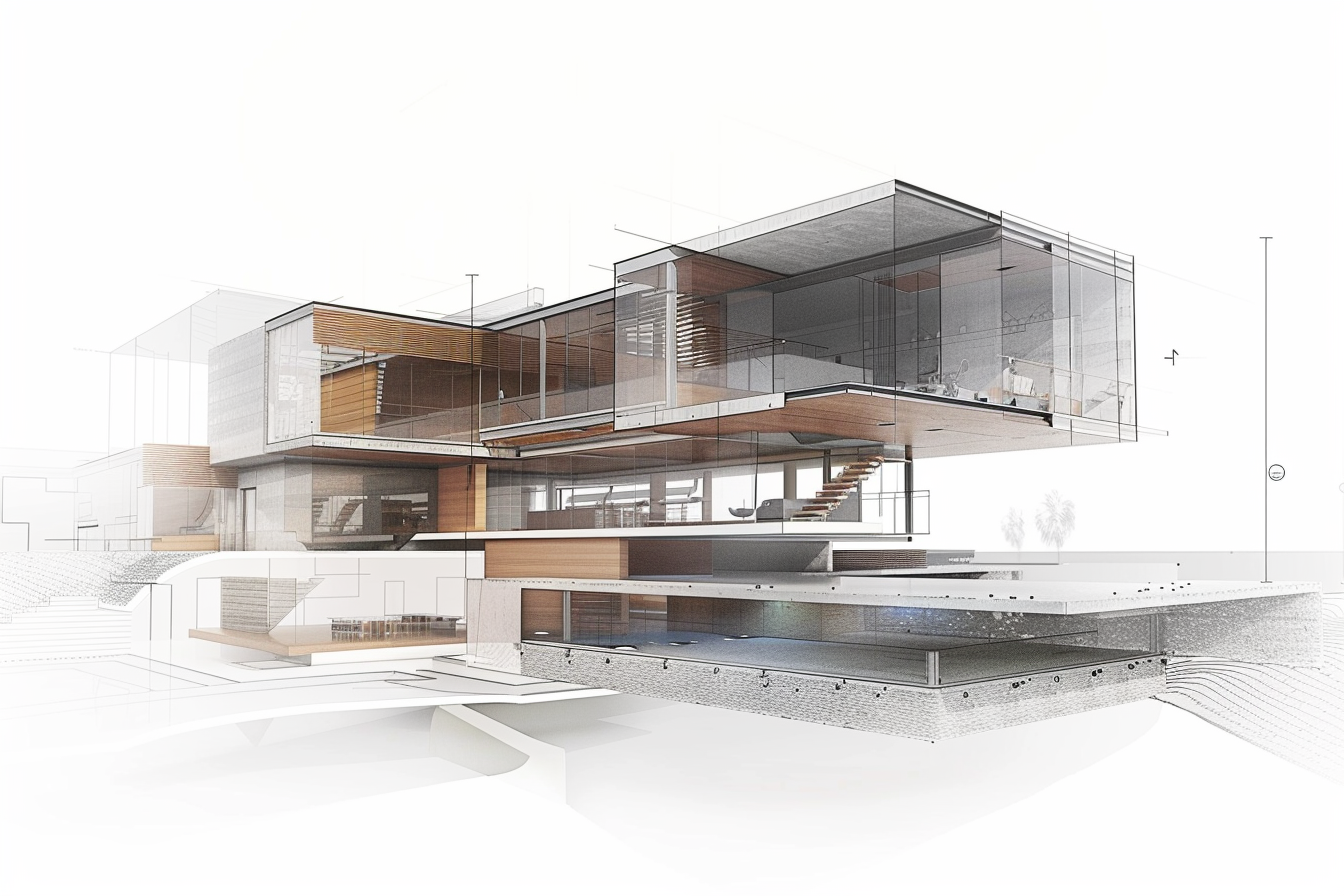Passive Design Integration

1. Introduction
Passive design is more than a collection of individual strategies—it is a holistic approach that harmonizes architectural form, materials, orientation, and environment to optimize building performance. When integrated thoughtfully, passive systems can significantly reduce energy consumption, enhance occupant comfort, and support sustainable development. Recent architecture graduates entering professional practice often encounter challenges in translating isolated passive design principles into a fully integrated building system. This article bridges the gap between academic theory and practice by exploring how passive strategies can be interwoven into cohesive architectural solutions. The article will cover integration principles, key components, climate considerations, systems coordination, and real-world case studies.
2. The Philosophy of Integration in Passive Design Rather than implementing strategies in isolation, integrated passive design views the building as a single, responsive organism. Natural ventilation, solar orientation, thermal mass, insulation, daylighting, and shading must be designed to work in tandem—not competition.
Pro Tip: Experienced architects often begin passive design integration during the massing and zoning stages, not as a retrofit after form development.
3. Key Passive Design Strategies and Their Roles in Integration
3.1 Solar Orientation and Control
Orientation dictates how a building responds to solar gain, influencing heating, cooling, and lighting loads. Integrated design uses this as the backbone to align all other strategies.
3.2 Natural Ventilation Cross-ventilation and stack effect strategies must be coordinated with the floor plan and section early in design. Openings, atriums, and thermal chimneys can be designed in tandem with structural systems.
3.3 Thermal Mass and Insulation Thermal mass absorbs heat during the day and releases it at night, while insulation slows heat transfer. The balance between these two varies by climate, but both need to be considered relative to window placement and shading.
3.4 Shading Devices Fixed and operable shading elements must align with solar orientation and daylighting goals. An integrated approach avoids redundancy or interference between components.
Pro Tip: Use overhangs or fins that also serve structural or aesthetic purposes to maximize efficiency.
3.5 Daylighting and Visual Comfort Daylighting must be integrated with glazing choices, shading systems, and interior layouts. Light shelves, clerestories, and reflective surfaces enhance natural light distribution.
4. Climate-Specific Integration Approaches4.1 Hot-Arid Climates
- Prioritize thermal mass and high insulation.
- Minimize openings on west-facing facades.
- Integrate courtyards for ventilation and cooling.
4.2 Hot-Humid Climates
- Maximize cross-ventilation with narrow floor plates.
- Use high roofs with vents to promote stack effect.
- Elevate structures and integrate shading.
4.3 Temperate Climates
- Use seasonal strategies (e.g., operable shading, switchable insulation).
- Integrate deciduous vegetation as a passive shading system.
4.4 Cold Climates
- Prioritize insulation and compact form.
- Maximize southern exposure for passive solar gain.
- Use vestibules and thermal buffers (like sunspaces).
5. Case StudiesCase Study 1: Bullitt Center, Seattle, USA
- Architect: Miller Hull Partnership
- Strategies Used: Solar panels, operable windows for ventilation, thermal mass via concrete slabs, external shading devices.
- Result: Achieved net-zero energy. Daylight autonomy in over 80% of occupied spaces.
Case Study 2: Khoo Teck Puat Hospital, Singapore
- Architect: CPG Consultants
- Strategies Used: Cross-ventilated wards, passive courtyards, rooftop gardens, and external shading integrated into the facade.
- Result: Reduced energy consumption by 27% compared to typical hospitals in the region.
Case Study 3: SDE4 Building, Singapore
- Architect: Serie + Multiply Architects with Surbana Jurong
- Strategies Used: Perforated envelope, natural ventilation, exposed concrete for thermal mass, daylight optimization.
- Result: First net-zero energy building in a tropical setting designed for education.
Pro Tip: The early engagement of engineers and landscape designers in SDE4’s design was key to achieving integrated passive systems.
6. Coordination Between Disciplines True integration requires collaboration across architecture, MEP, structural, and landscape teams from the earliest stages. Passive strategies affect all building systems—from envelope detailing to HVAC sizing.
- Use Building Performance Simulation (BPS) early to test passive strategies.
- Share 3D models for clash detection between shading devices and structural systems.
- Collaborate with landscape architects to integrate vegetation and water bodies as passive cooling tools.
7. Practical Implementation Guidelines
- Start with climate data: Use tools like Climate Consultant, Ladybug, or EnergyPlus.
- Design with flexibility: Account for user control and future changes.
- Integrate feedback loops: Use post-occupancy evaluations (POEs) to refine future designs.
Pro Tip: Always consider the user behavior—the success of passive systems often hinges on how occupants interact with them.
8. Conclusion Integrating passive design strategies into cohesive building systems is not a linear process but an iterative, collaborative effort that starts from the earliest design stages. By combining solar orientation, ventilation, thermal mass, insulation, shading, and daylighting with contextual climate responses, architects can create buildings that are not only energy-efficient but also responsive and resilient. For recent graduates, mastering integration means shifting from viewing passive strategies as isolated checkboxes to understanding their synergistic potential. The ability to coordinate systems into a single, high-performance solution is a hallmark of thoughtful, professional practice—and a critical step toward truly sustainable architecture.